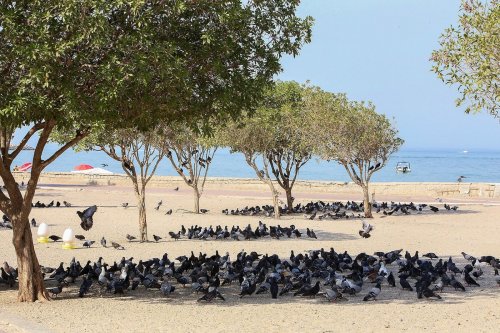In India due to global warming strong heat waves are expected to begin in early May, and temperatures will rise to record levels.
This will increase the number of days with dangerous temperatures and many hours of outages electricity, reports Bloomberg
In India, meteorologists are working with the states and the federal government's disaster relief unit to receive early warnings to those on the ground.
Two months before the monsoon season, which usually brings cool rains, the temperature has already reached 46 degrees Celsius , and in March - the highest level since 1901.
According to Mrutyunjay Mohapatra, head of the country's meteorological department, local authorities are implementing action plans to address health and even death risks.
Roxy Matthew Coll, a climatologist at the Indian Institute of Tropical Meteorology, explained that the only cause of this heat is global warming, which confirms data for seventy years and the number of heat waves.
According to the UN Intergovernmental Panel on Climate Change, in the coming decades, India is expected to suffer from more frequent and intense heat waves, extreme rainfall and intermittent monsoons as the planet warms. According to McKinsey, by the end of the decade, the loss of working hours due to the heat wave could lead to losses of $ 250 billion, or 4.5% of gross domestic product.
For India, the world's poorest super-emitter, adapting to the hot Earth is as urgent as reducing emissions that heat the planet. Studies have also shown that heat mortality has increased by 62% over the past 20 years.
Official climate change assessment, published in 2020, showed that the frequency and intensity of droughts and cyclones have increased significantly over the past six decades. The number of days of heavy rainfall and the rate of sea level rise more than doubled during this period.
Disasters emphasize that countries such as India, which are responsible for the relatively small amount of greenhouse gases that accumulate in the atmosphere, are often burdened by climate change. This means that the country has to spend billions on protection instead of investing in economic development that could lift millions out of poverty. These countries, especially in Africa, also usually do not have the resources to weather monitoring and forecasting, so that they can better prepare for extreme events.
India is investing in improving its observational data and computing capabilities to create better climate models. Mohapatra said they managed to reduce the number of deaths from cyclones to six in 2021 from 10,000 a year in 1999, making more accurate short-term forecasts. However, more unstable weather is becoming more difficult to predict.
At present, local authorities may need to consider a number of measures to protect people from the heat, Mohapatra said. They could limit school hours to cooler mornings from 7 to 11 a.m., recommend not working on farms and construction in the afternoon, and provide additional support to street vendors, street workers, police and those living in urban areas without access to refrigeration. .
We will remind, in Europe in 2021 the temperature increased by a record 2 ° C.
As reported EcoPoliticа before, in Norway, due to climate change, began to produce wine.





